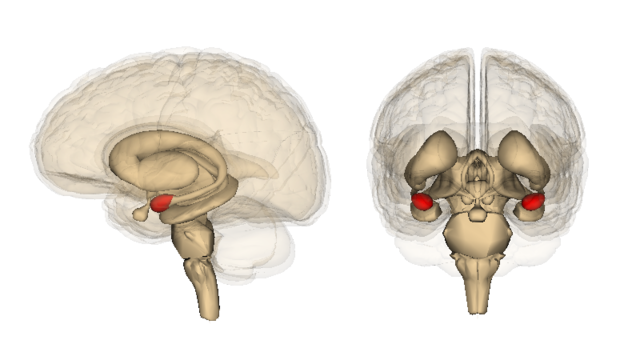Background
Alcohol Use Disorder (AUD) is a condition that in 2016 was recorded affecting 283 million people (WHO, 2018). AUD poses dangers for one’s own health, since it is highly correlated not only with physical diseases, but also numerous mental conditions; this disorder can also cause issues regarding socio-economical status and endanger people close to the ones that are affected by it.

Amygdala in the brain: where physiological responses are produced to answer environmental stimuli.
Aims
In this study I decided to focus on two phenomena that have been observed in recent papers to have a role in alcohol compulsive intake, an essential part of AUD.
EZH2
An epigenetic enzyme expressed in the neurons of the Central Amygdala. EZH2 works thorugh “silencing” genes, meaning that it blocks them from getting expressed. It has been observed a higher expression of this enzyme in the Central Amygdala of patients affected by AUD (Bohnsack et al., 2019).
To read what I actually did in the lab, click here!
PKCδ+ neurons
These particular neurons express the enzyme protein kinase δ (PKCδ). These cells have been observed to have an increased activity in the Central Amygdala of rats which were consuming alcohol compulsively, despite negative consequences (a schock) (Domi et al., 2021).
References
Bohnsack, J.P., Teppen, T., Kyzar, E.J., Dzitoyeva, S., Pandey, S.C. (2019). The IncRNA BDNF-AS is an epigenetic regulator in the human amygdala in early onset alcohol use disorders. Trnaslational Psychiatry, 9, 34.
Domi, E., Xu, L., Toivinen, S., Nordeman, A., Gobbo, F., Venniro, M., Shaham, Y., Messing, R.O., Visser, E., van den Oever, M.C., Holm, L., Barbier, E., Augier, E., Heilig, M. (2021). A neural substrate of compulsive alcohol use. Science Advances, 7(34), eabg9045